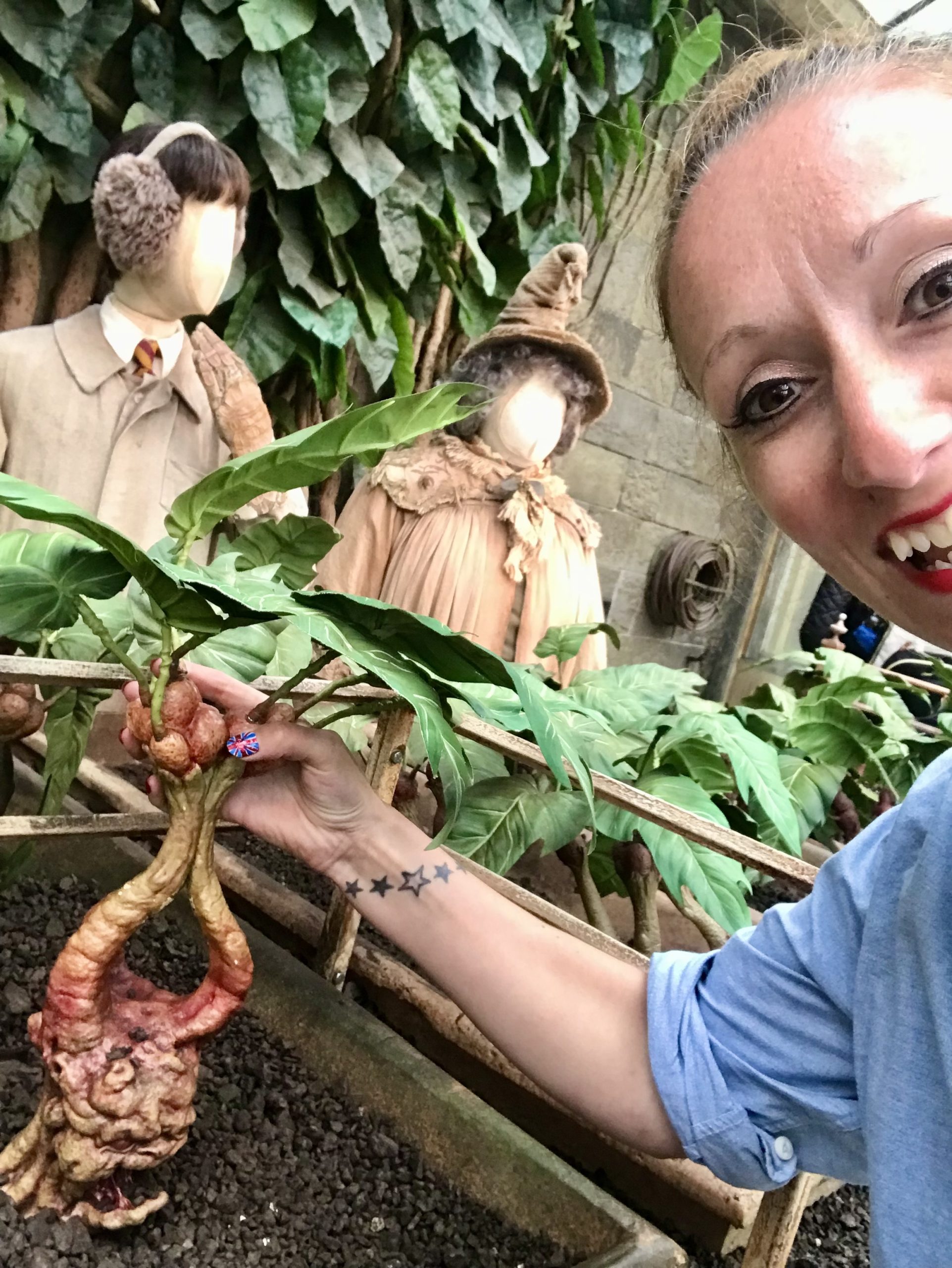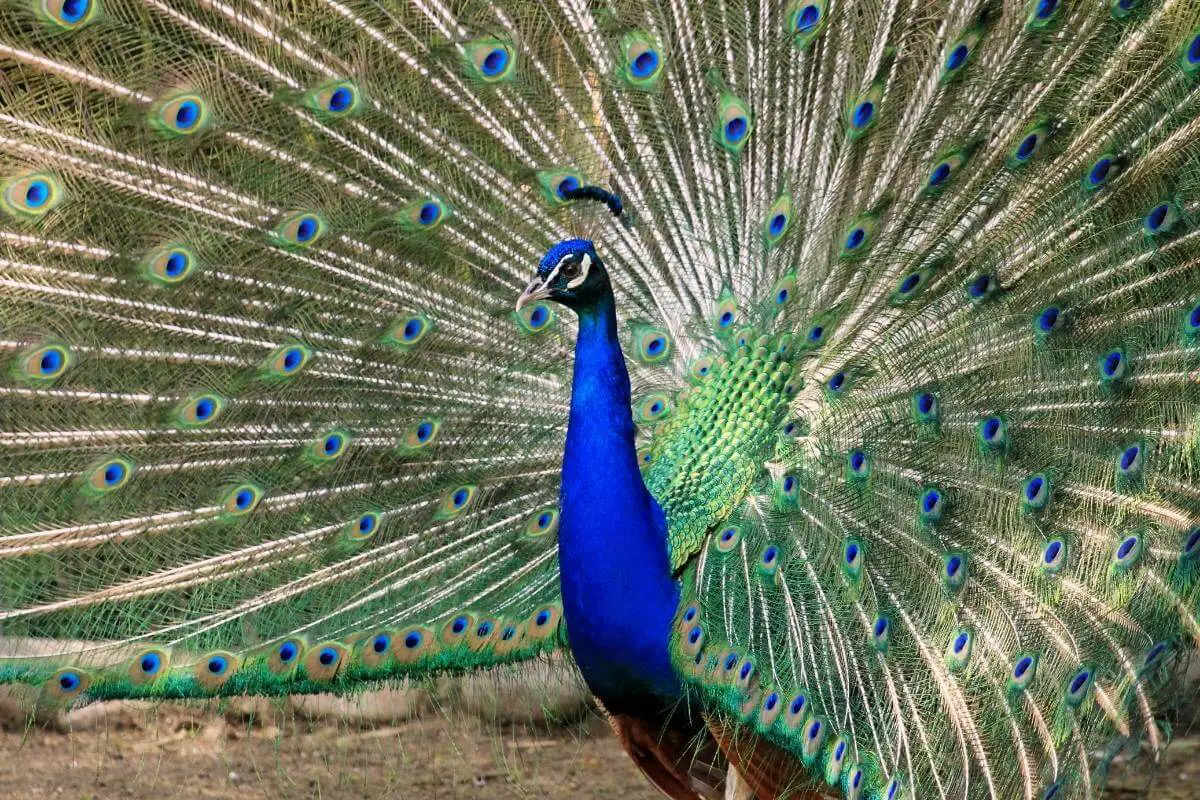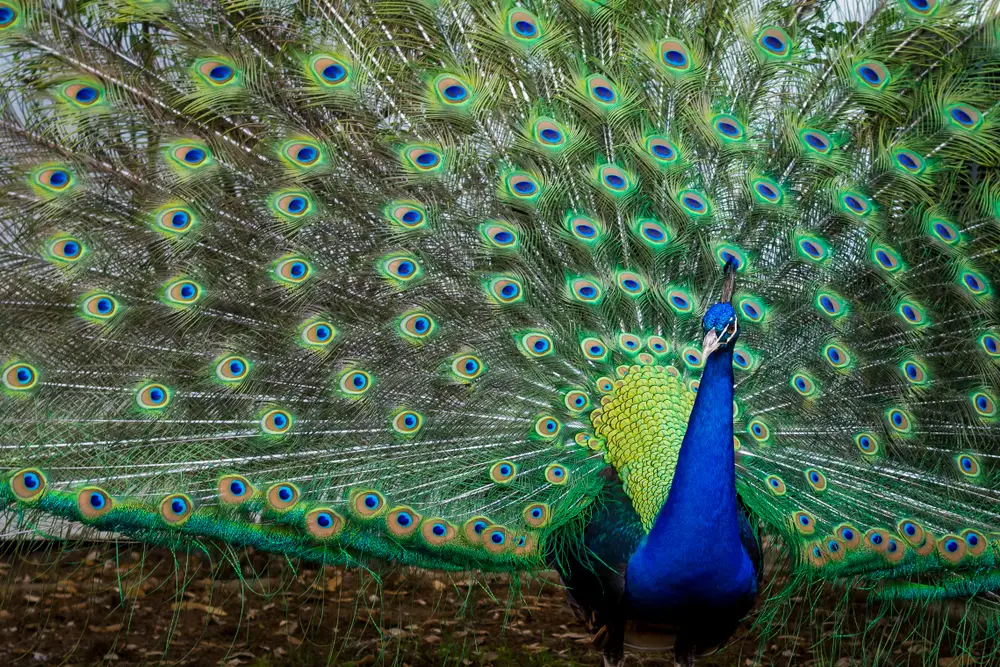
There is nothing quite as magnificent as a peacock with its extravagant fan of colorful tail feathers. If you have encountered one of these majestic creatures strutting around an urban neighborhood, you may have wondered “Are peacocks native to the U.S.?”
Here, we’ll explore the history of peacocks, which states have wild peacocks, the current status of wild peacocks in the U.S., and their role in urban environments.
So read on to find out if there are native wild peacocks in the US!
Are Peacocks Native To The U.S.?
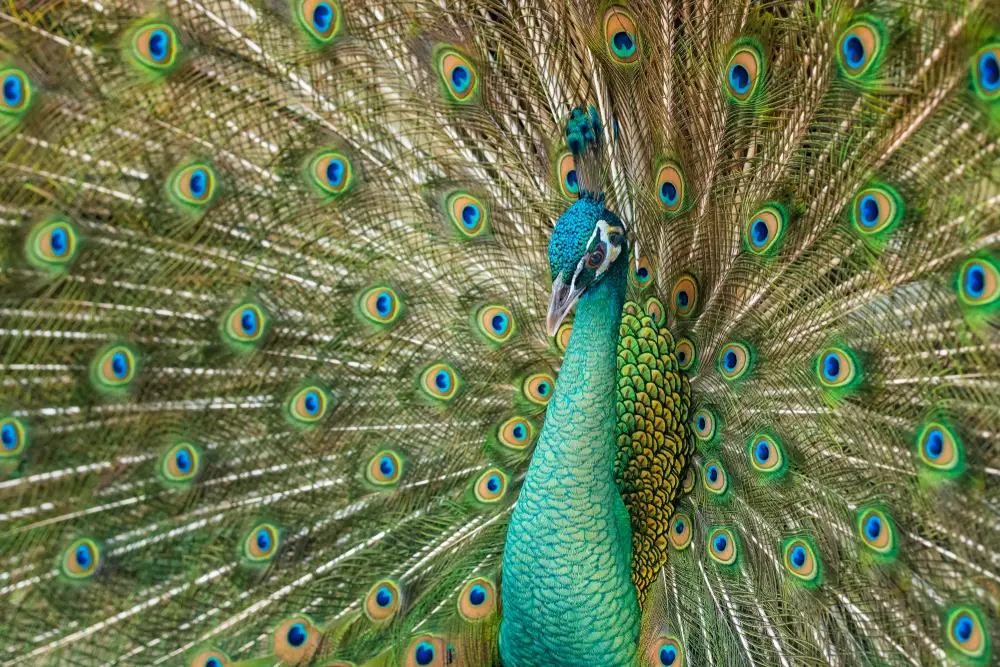
No, peacocks are not native to the U.S. But…
Are There Wild Peacocks In The U.S.?
Yes!
You can see these magnificent birds strutting around several states in the U.S., including Florida, California, Texas, and Hawaii.
Though they are commonly called peacocks, peafowl is the correct name for this exotic bird.
- Peacocks: are male
- Peahens: are female
- Peachicks: are babies
Peafowl are not native to the U.S. but come from India and Southeast Asia. These beautiful birds are from hot climates so have adapted well as non-native species in warmer states, such as Florida and Texas.
Peacocks are omnivores, so their diet is based on seeds, flower petals, fruit, insects, and some smaller reptiles and mammals. Known to be non-fussy eaters, peacocks thrive in urban areas with green spaces. It is not uncommon to see these proud peacocks scratching through leaves for tasty morsels in places like Hawaii and California.
What Are The Types Of Peacocks?
There are three species of peafowl:
- Indian Peacock: These are native to India and Sri Lanka. This is the most famous type of peacock with its showy iridescent tail feathers and bright blue neck and head
- Green Peacock: These are native to Java in Southeast Asia. These also have magnificent tail feathers. They have a deep green neck and head which distinguishes them from the Indian Peacock
- Congo Peacock: These are native to Africa. These are smaller than the other two species of peacock. They do not have long tail feathers and are black and blue in color
But how did peacocks get to the U.S.?
History Of Peacocks In The U.S.
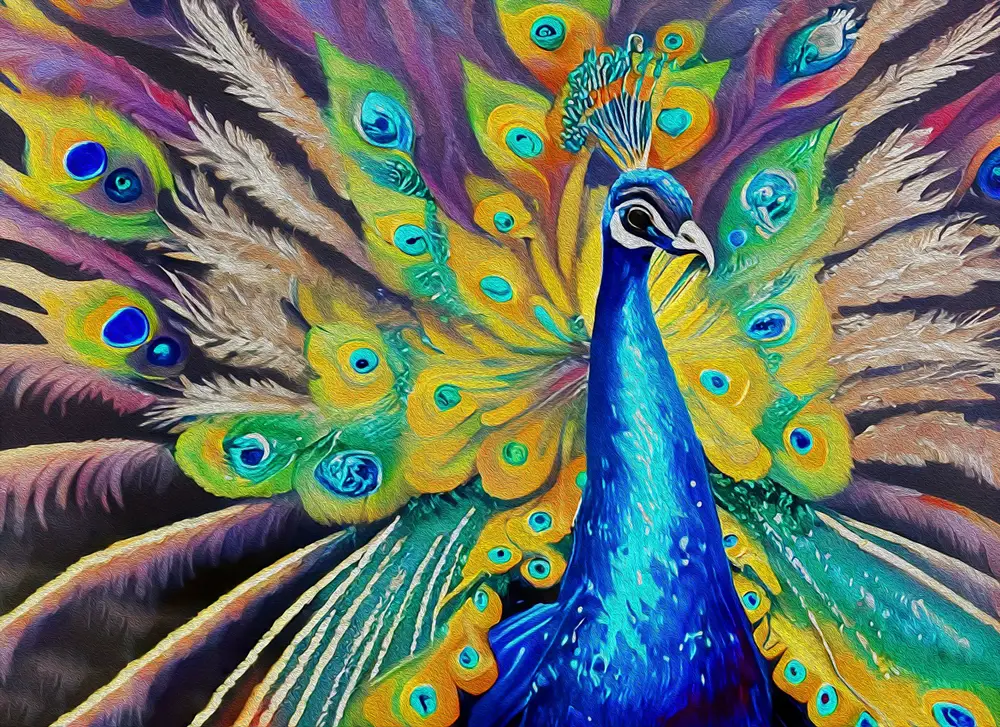
Though they are native to India and Southeast Asia, peacocks are on every continent apart from Antarctica!1
Because of their exquisite beauty, peacocks have long been a prized possession of wealthy landowners. From Kings and Queens of England to Pharaohs of Egypt, and Emperors of Rome to Tsars of Russia, owning peacocks has long been a symbol of status.
So, how did peacocks make their way to the U.S.? Dating back to the 1800s, many wealthy American landowners also wanted to display these prized birds. So to show off these opulent birds they imported them from other countries.
Over the years, many of these colorful peafowl have made their way into the wild. They have done so by either escaping private residences and zoos or being deliberately released.
Let’s look at the history of some of the states with wild peacocks and how the exotic birds first got there.
Texas
One of the first places peacocks originated in Texas was at Mayfield Park in Austin.3
Before it became a park, it was a private home. At Christmas 1935, the owners, Dr & Mrs Gutsch, were presented with a gift of a pair of peafowl from some friends. This pair mated and began the Mayfield Park flock. The owners loved the bird so much, they continued to add to their flock with other types of peacocks.
The Mayfield Park is now home to around 24 Indian Blue and Black-Shouldered types of peafowl.
California
Elias J. “Lucky” Baldwin, a wealthy rancher and one of the largest landowners, was the first person to bring peacocks to California.1
After he died in the early 1900s, a large part of his land turned into the Los Angeles County Arboretum & Botanical Gardens. Hundreds of his prized peafowl continued to thrive and reproduce and many have made their way to other locations in California.
Florida
It is not uncommon to see these striking creatures strutting around neighborhoods in Miami or Fort Lauderdale. But how did peacocks get to Florida?
Peacocks have long been residents of zoos and the wild population likely escaped captivity. It is also suspected that private owners intentionally released them into the wild.
Whether they escaped or were released it’s quite a sight to see these proud peacocks perched in trees throughout the Sunshine State!
Hawaii
Peacocks first arrived in Hawaii in the 1800s.2 Feral peacocks are now found on most of the main islands, including:
- Oahu
- Maui
- Kauai
- Big Island
The Hawaiian royal, Princess Ka‘iulani’s love of the colorful peafowl is well known. She is often known as the “Peacock Princess”!2
The statue in Honolulu which honors Princess Ka‘iulani, features her feeding one of her beloved peacocks. Some believe her flock of peacocks mourned her death and could be heard crying out the night she died.8
Can Peacocks Survive In The Wild In The U.S.?
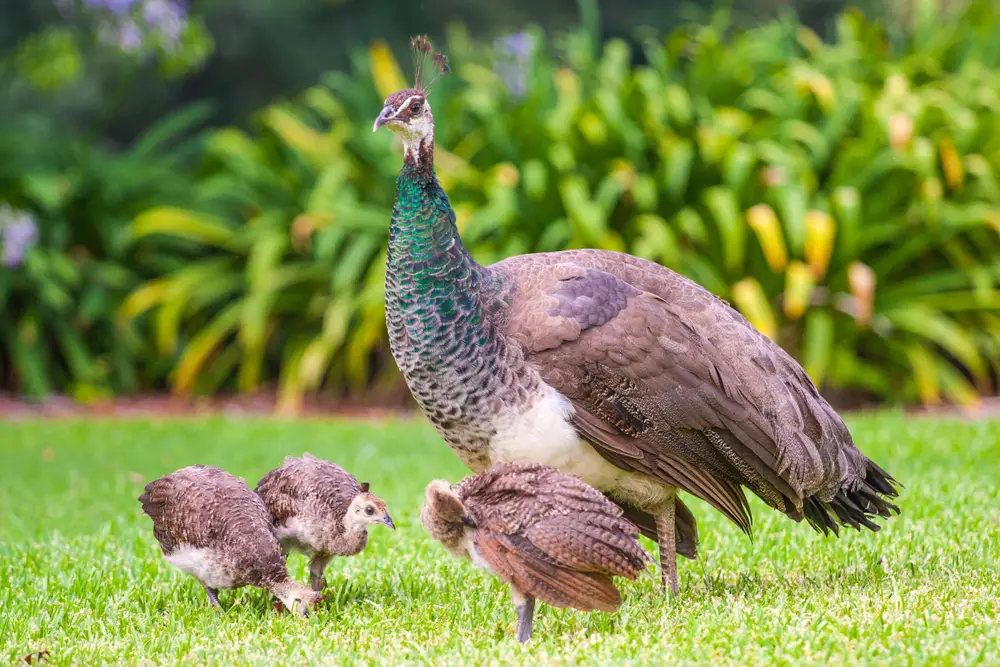
As long as peacocks have a warm climate, food, water, and shelter (trees to perch in) then their population thrives.
This is why the subtropical climates of places like Hawaii and Miami along with their ample supply of food make them the perfect homes for this non-native species.
Resident pets and wild predators (such as coyotes and raccoons) pose a threat to peacocks. To avoid these predators, peacocks find safety in numbers and find refuge high up in trees or on rooftops.
What Is The Current Status of Peacocks In The U.S.?
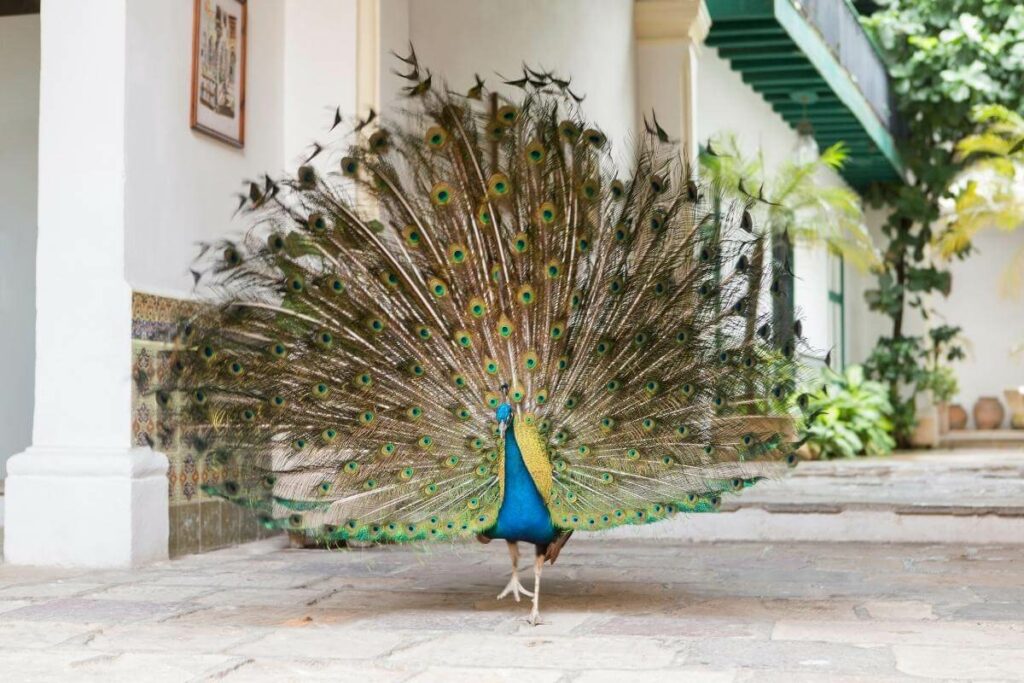
Feral Peacocks In The U.S.
What is the difference between feral peacocks and wild peacocks?
- Feral: refers to domesticated animals (usually non-native) that now live in the wild.
- Wild: refers to native species living outside of captivity
So peacocks are technically feral in the U.S., but people use these terms interchangeably.
Is It Legal To Own Peacocks In The U.S.?
Yes! It is legal to own peacocks in the U.S. However, individual states, counties, and districts have different restrictions. So make sure to check local laws.
Peacocks are very large birds that require lots of room and adequate access to food, water and shelter.
Many people want to own these resplendent birds but don’t understand their requirements and are unable to care for them. Check out what to feed wild peacocks in your backyard for some useful tips.
This is one of the reasons that so many have escaped or been intentionally released into the wild.
What Are The Problems With Wild Peacocks?
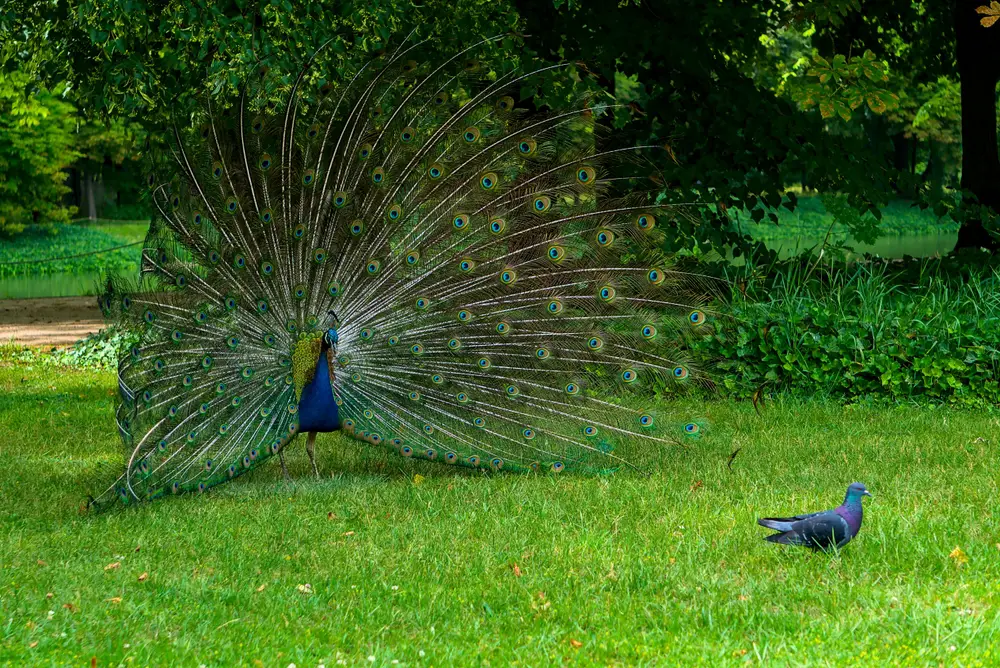
Many people have problems with wild peacocks in U.S. cities.
Peacocks are also very noisy during mating season. This is the biggest complaint residents have about these feathered friends.
Wild peacocks are not a protected bird in the U.S. While they are not protected under Federal Law, they are protected by cruelty laws. It is illegal to intentionally hurt or kill a feral peacock.
Many cities have animal control for wild peacocks. Various urban areas are managing wild peacock populations by:
- Trapping and relocating
- Making it illegal to feed wild peacocks
- Performing vasectomies on male peacocks
Are Wild Peacocks Invasive In The U.S.?
No, peacocks are not considered an invasive species in the U.S. But many people think they are nuisance birds.
All across the U.S., neighborhoods are divided in opinion over peacocks as urban wildlife.
Are Wild Peacocks Destructive To Property?
During mating season, peacocks can become aggressive. There are reports of peacocks damaging property and cars.
It is common for peacocks to attack their own reflection. This sometimes results in them scratching cars and screens as they see themselves in the reflection.
They can also destroy gardens, flower beds, and compost piles in their search for food.
Do Wild Peacocks Attack Humans?
It is not normal for peacocks to attack humans. But, if they feel threatened, they can attack humans.
Usually, they send a distress warning with a loud screech. If they continue to feel threatened they can attack humans with their talons and beaks.
Things you can do to protect yourself:
- Never threaten a wild peacock
- Be careful around them especially during mating season (February to spring)
- Do not get close to a peahen with her peachicks
- Keep children and small pets away
How To Get Rid Of Wild Peacocks From Your Property
If you want to deter feral peacocks from your garden and property you can follow these tips:
- Do Not Feed: as long as peacocks have a reliable food source, they will continue to reside there
- Fencing: put fencing or wire mesh around your gardens and flowers to stop peacocks from eating them
- Netting: protect your vegetables with netting
- Sprinklers: the spraying water deters peacocks from entering your garden
- Dogs: most dogs will keep peacocks out of their yard
- Animal Control: if all else fails, contact your local animal control to remove and relocate the birds
The Future Of Wild Peacocks In The United States
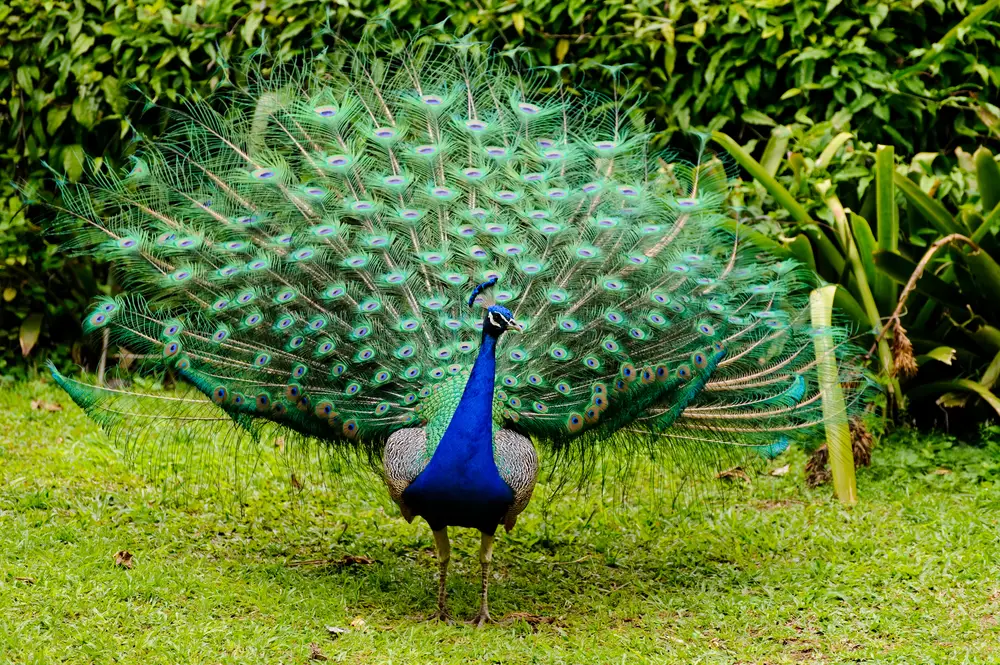
Peacocks are not native to the U.S. but there is a thriving wild peacock population in many states.
Primarily introduced by wealthy landowners, the ornamental bird has adapted well in states like Texas, Florida, California, and Hawaii. This is due to the ample food supply and subtropical climates.
Unfortunately, many communities are divided over the presence of the proud peafowl. Disagreements occur over their noise, possible destruction of property, and interactions with humans and pets.
However, the magical beauty of these exotic birds continues to fascinate residents. The goal now is to balance the allure of wild peacocks with their impact on local environments and communities.
